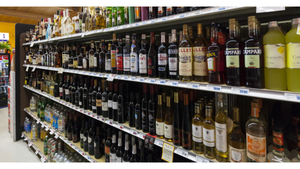DOLLAR STORE FORMAT MATURING, CEO SAYS
MIAMI -- The new Dollar General Market format has quickly evolved from a curiosity for bargain hunters into a serious contender for primary food shoppers, a top company executive said at the IRI Reinventing CPG + Retail Summit here."We will not be the dime store of the 21st century," said David Perdue, chief executive officer of the 7,300-store chain.Perdue said the Market banner, introduced 18 months
March 7, 2005
Robert Vosburgh
MIAMI -- The new Dollar General Market format has quickly evolved from a curiosity for bargain hunters into a serious contender for primary food shoppers, a top company executive said at the IRI Reinventing CPG Retail Summit here.
"We will not be the dime store of the 21st century," said David Perdue, chief executive officer of the 7,300-store chain.
Perdue said the Market banner, introduced 18 months ago, offers consumers more convenience than supercenters and supermarkets, providing an easier, faster experience that goes beyond price.
"Instead of a weekly trip to both a grocery store and a dollar store, Dollar General Market shoppers buy spaghetti, soap and socks under one roof, in a convenient environment," he said. "This model is quickly transforming Dollar General into a destination as opposed to a fill-in."
Market stores are typically twice as large as regular Dollar General units. Half of the store is dedicated to food, while the other half offers the chain's standard general merchandise assortment.
Describing the channel as "the hummingbird of retail," Perdue listed a number of factors fueling growth. Many stores attract consumers looking to avoid the crowded parking lots and endless aisles of supercenters. This demographic allows Dollar General to build stores in the shadow of Wal-Marts and Super Targets, Perdue noted.
"By offering a faster and easier shopping solution for busy customers, we are redefining convenience," Perdue told the audience, adding that the Dollar General shopper today typically completes his or her trip in fewer than 10 minutes.
The channel also is nimble because it offers fewer stockkeeping units. Perdue pointed out that Dollar General and its competitors operate with a "very narrow slice" of SKUs. This strategy carries risk, but the rewards far outweigh them, he said.
Stores are also small enough to take advantage of neighborhood real-estate sites, particularly in lower-income areas where consumers may lack the transportation required to haul a week's worth of shopping home.
"For 65 years, Dollar General has sought out and catered to the underserved customer," he said. "Nearly one in five in America today earns less than $30,000." The retailer's fastest-growing demographic, however, is households with incomes greater than $50,000, attracted to the stores' low prices on brand-name, high-volume products.
Indeed, general economic conditions can compel all incomes to seek out bargains in the dollar channel. Perdue cited the ongoing effects of higher gasoline and heating oil prices as examples of shopping motivators.
"In this economic environment, the efficacy of the deep-discount, small-box model has been stronger," he said.
Dollar General is far from saturating any single market as well. Perdue said that two of every three stores opened last year were in the 30 states where the retailer already operated.
"We live and breathe in a one- to three-mile demographic marketing area," he said.
Dollar General expects to be living larger in the future. Perdue said channel blurring and a maturing U.S. and European retail economy will add credibility to the small-box discount format.
"As we broaden our merchandising selection to include an increment of food in terms of our product categories, the relevancy of the [dollar store] model will increase," he said, adding that hard discounters account for more than 34% of household food budgets in Europe.
"In the U.S., however, extreme-value discounters account for a mere 2% of household food budgets. That smells like opportunity to me," he said.
To leverage this opportunity, Perdue said that Dollar General intends to build on its supply chain initiatives, working with vendors on point-of-sale data sharing and radio frequency identification testing.
"I really believe that [RFID] can be expanded to make our industry's delivery system much better than it is today," he said. "Imagine replenishing a shelf in a pantry or a hanger in a closet. That's where RFID will take us if we will let it."
About the Author
You May Also Like




